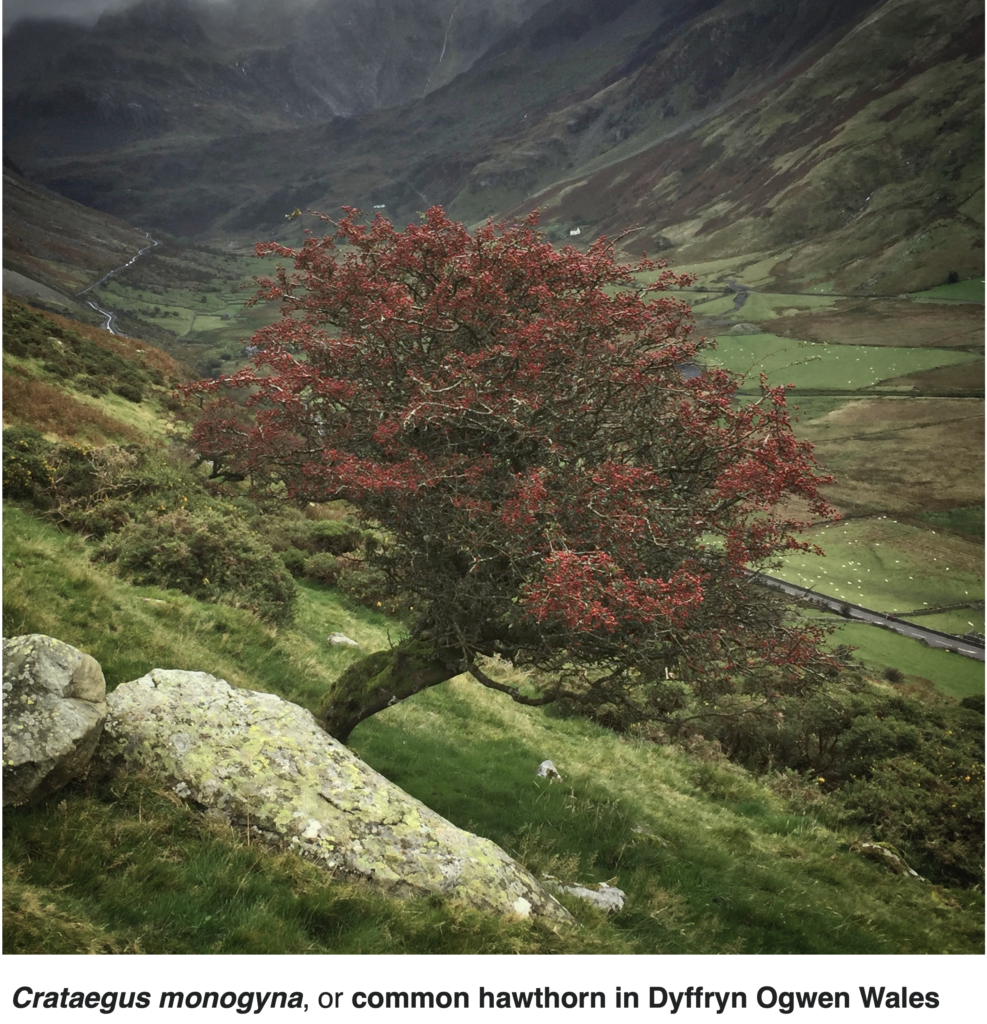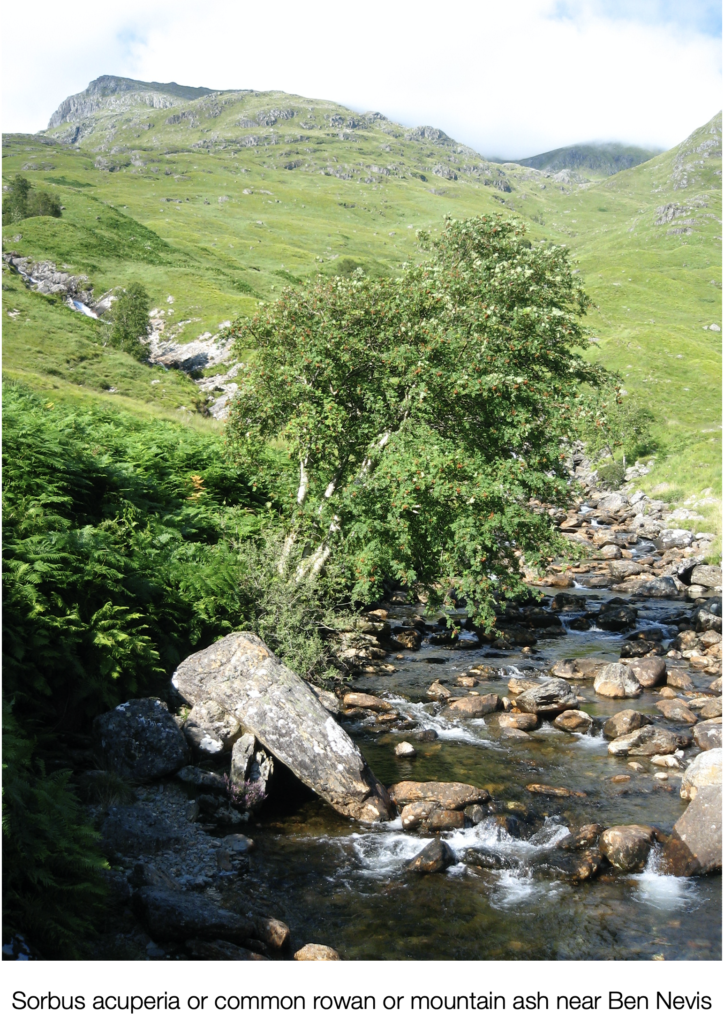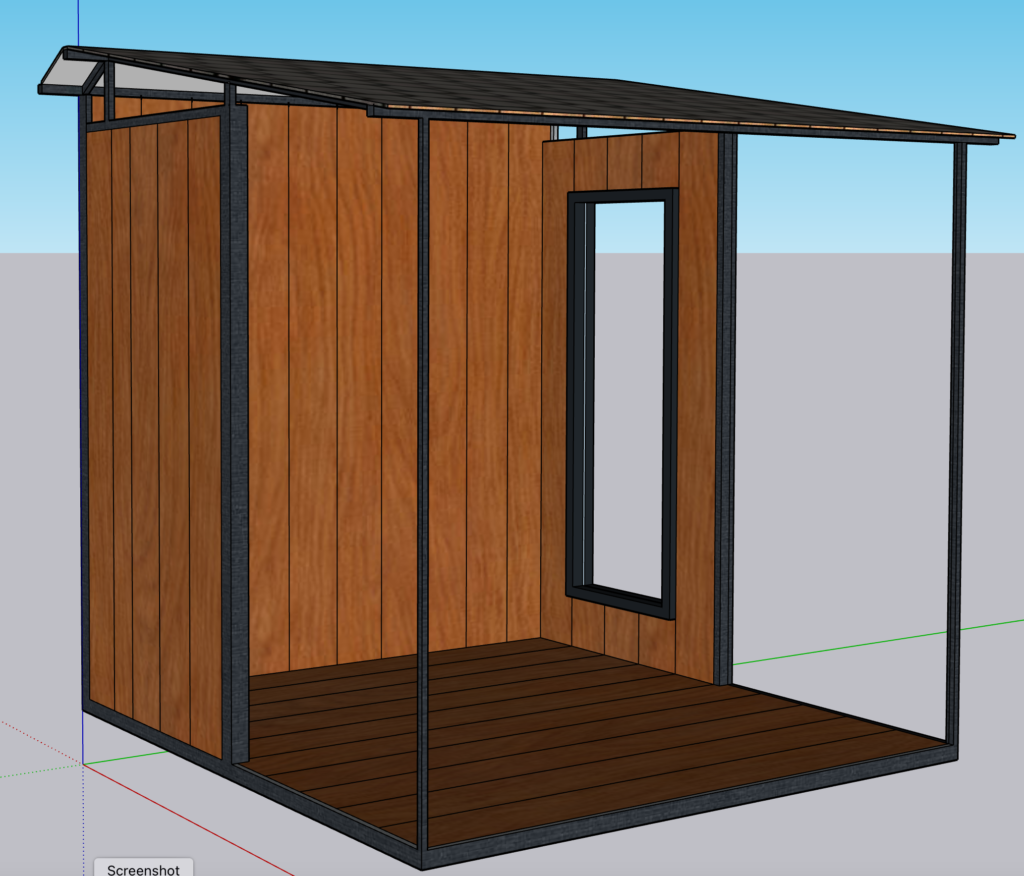In the last post I described how difficult it is to grow some of the traditional plants of a Japanese garden in my garden – especially Acer Japonicum which dislikes exposure to wind, and flowering cherry because the blossom wouldn’t last five minutes. I am therefore experimenting with other deciduous trees. Deciduous trees are used in contemporary Japanese gardens in a style called zoki-no-niwa. In the Japanese Garden Society journal Shakkei Vol 29 Number 1, Yoko Kawaguchi has an article on the Zoki-no-niwa style (p13-22) and I have an article which describes the care of some plants which might be found in such gardens.
The gardening conditions of my moorland garden rule out many of the plants that are described in both articles. I have had to look at what nature has allowed to grow in my locale and consult experts who have been plant hunters on exposed oriental mountain sides. My local environments – especially when there is some protection in cloughs – steep stream valleys cut into the local sandstone – support Betula (birch) species and the other deciduous trees that seem to survive are Crataegus (hawthorn). Therefore garden varieties of these trees were the first to go in.
Betula utilis, the Himalayan birch is a plant of choice in many designed gardens. I have always loved it, and in particular those specimens that are multi stemmed. I had a particular spot in mind close to the top of the garden. In sculpting the ground I had created a pear shaped hillock in front of the garden’s least desirable feature- and electricity power pole. I have planted three on this hillock alongside the path at the top of the hill. They are underplanted by Thymus seraphyllum- a creeping thyme which I hope will spread quickly and cover the bank. In time the Betula will break up the view of the pole.
Three tall Crataegus × media ‘Kermesina Plena’ known as “Paul’s Scarlet” was my next purchase. These were to be planted higher up on the slope so that they could be seen clearly from the room at the rear of the house. I am grateful for the assistance of Andy Bolton in this planting. As they were about 3m tall already, they have required some quite heavy staking, and the ties provided with the staking were not really up to the power of the wind on my slope. The ties have been reinforced with gaffer tape on basis “if it moves and it shouldn’t use gaffer tape”. It is likely that these stakes will be in position for about 4 years. They seem to have survived the winter. The Crataegus will be my substitute sakura – although flowering on the moor is likely to be a late May hamani, it should be more robust than cherry blossom.
Two Ilex aquifoliium ‘J.C. van Tol’ have also been planted. These evergreen varieties are self fertile and I hope berries will provide some winter food for wild life. One of these plants have already attracted attention form hares, as one of the shrubs has already ben defoliated at hare height. They have been sited to screen, from the bottom of the garden, the yellow plastic the power company has chosen to make the cable stays of the power pole more obvious. They are not doing their job and I will move them in an appropriate season.

Planting the lower slopes has provided a lot deeper design and horticulture thinking. I have scoured the internet with Pinterest and Instagram in particular, for inspiration. There are many images of zoki-no-niwa in modern domestic settings- although they are invariably on flat ground and in the shelter provided by buildings in Japanese ctiies. My circumstances require a bit more thought. When planting the crataegus, discussions with Andy Bolton lead me consider Sorbaceae. There are many trees in the family- offering interesting foliage with good autumn colours and a variety of forms and habits. In the wild UK mountains and moors many might challenge pines in the forms that weather and geological conditions have created. Sorbus commixta the Japanese rowan first came to mind, but I started to investigate further. Ness Botanical Garden was convenient for me to get to and has a reference collection of sorbus. A visit in September was planned when Sorbus is in berry.

It was clear from a conversation with Bleddyn Wynn Jones, a “plant hunter” from high altitude Eastern Asia and Sooth America and owner of Crûg Farm Plants, that some sorbaceae would fare better than others in my exposed conditions. Some soil improvement is required – sorbus do not like waterlogged roots. In common with typical Japanese planting they will be planted on mounds. He suggested S. bissetii, bulleyana, koehneana, microphylla, pseudovilmorinii, randaiensis, setschwanensis, tianshanica, and vilmorinii . Based on the material that they had growing in the field at Crûg Farm I started a collection with S. keohanna, S.microphylla, S,randiensis and S. randaiensis as young multistem trees at between 2-3m tall.
S. keohanna i an interesting form of this rather rare species originating from western Sichuan, Erlangshan, Tianquan, above Xinggou at 2675m. It becomes a fastigate dense young trees which bear a heavy crop of almost bluish-pink fruit. With 9-11 paired leafleted pinnate foliage 15cm long. Best grown in good light in a well drained soil with some humus to retain some moisture, avoiding too rich a soil or too hot a site. It could grow to 8 meters in height depending on the growing conditions. The bark of the tree is grey and smooth, with lenticels (pores) that become more prominent on older trunks.
Sorbus pseudovilmorinii A small tree recommended for smaller gardens, particularly in the drier areas of the country that find it difficult to cultivate Sorbus. Left to itself it grows up to 4m tall, but can grow up to 8m in time. It has slender branches of small grey-green pinnate leaves to 15cm long, composed of 10-14 pairs of leaflets each to 2.3cm long. Flowering in lax corymbs later than most species, while the crimson fruit are conspicuous by late June, slowly transforming to almost white by autumn. The autumn foliage turns a very desirable deep crimson and the fruit remains on the bare branches until November-December.
Sorbus Microphylla Its name translates as small-leaved rowan . It can be found in various habitats such as mountains, valleys, and rocky slopes. It can grow up to 10 meters in height, and its bark is grey and smooth when young, becoming rough and furrowed as it ages.
The leaves of Sorbus Microphylla are pinnately compound and have an oval to elliptic shape, with serrated margins. The tree blooms in late spring to early summer, producing clusters of small, white flowers. The fruit that follows is a small, round, red or orange berry that persists through the winter. Its berries are part of the diet of red pandas.
Sorbus randaiensis is a hardy tree species that can tolerate a range of growing conditions, including exposure to wind and full sun. It is an elegant small tree with arching branches of sharply serrated leaves. The seed of the supplied tree came from of one of Belddyn’s trees which in turn came originally from Hohuanshan Taiwan in 1996. With pinnately arranged leaflets emerging a bronzed colour in spring and turning brilliant crimson or orange in autumn. There is a generous display of wide corymbs of white flowers, which dependably transform to glossy fruit that are yellow to orange eventually almost red heavily weighted infructescences being as conspicuous as it gets .
I haven’t shown any photographs because at present the bare stems of the trees newly inserted in the ground don’t amount to much. If you use search engine you can find images of mature trees.
